How does a two-tariff electricity meter work and is it profitable?
It would be nice to lower your electricity bills without resorting to illegal methods - twisting, attaching magnets, installing additional emitters, etc. Do you agree? This seems unlikely to consumers, but housing and utilities organizations say that modern two-tariff electricity meters will help save on light. Is it really?
In this publication, we will talk about what dual-rate counters represent and how they work. We will calculate the real benefits of using a modern meter and find out which of the consumers installing such a meter will be profitable, and who better to stay on a conventional electricity meter.
The content of the article:
Purpose and types of double tariff meters
Two-tariff meters are electricity metering devices with two sets of metering mechanisms, each of which operates at set intervals. They were commissioned to unload the evening and morning maximum use of electricity and increase the reliability of power supply.
The fact is that any fluctuations in electricity consumption adversely affect the operation of power plants, professional equipment and transmission lines. Uneven energy consumption on the line during the day leads to increased deterioration of equipment at power plants and substations.
There are two main temporary peak loads: from 7 to 10 and from 18 to 23 hours. In the morning, people gather for work, and therefore include electric kettles, microwave ovens, hair dryers, irons, etc. In the evening after 18 they come home from work and begin to actively use split systems, microwave ovens, electric kettles and other household and lighting devices.
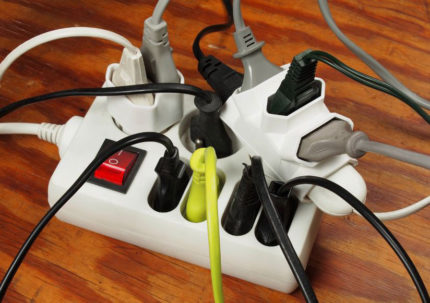
In order to adjust the load on the power grid, a multi-tariff system was developed.
With a single-rate tariff, the cost of kilowatts is constant around the clock.In the presence of a two-tariff meter, the calculation of electricity consumption occurs at a differentiated rate.
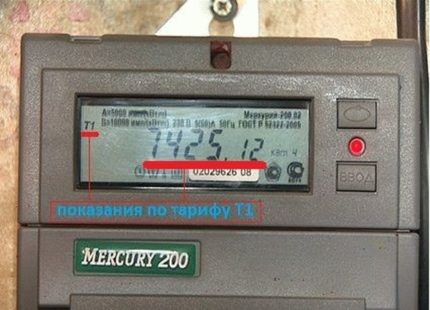
The two-tariff device controls consumption in two time zones: from 7.00 to 23.00 and from 23.00 to 7.00. At night, electricity is calculated using a reduced coefficient, and during the day, using a higher coefficient.
A kilowatt * hour in the afternoon on a two-rate meter is more expensive than on a single-rate meter. The authorities considered that this would be an additional incentive for citizens not to load networks during peak periods.
The principle of operation of the electric meter
Two-tariff and single-tariff meters are similar to each other by the principle of operation. These devices receive data on energy consumption from current and voltage sensors located in the housing. Then they are converted by an electronic circuit and the final results are displayed.
In modern two-tariff meters, all results are transmitted to the server of the electricity supplier via secure radio channels. This allows you to control and take into account the nature of the electricity consumption of each consumer individually.
More expensive meters are equipped with a special interface for connecting to a PC. They are used for the functioning of the system. "Smart House".
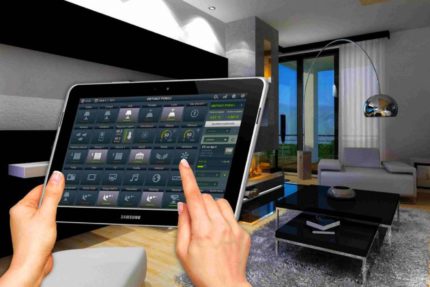
When installing a two-tariff meter, it is programmed to calculate energy consumption at a lower tariff in the period from 23:00 to 7:00 hours. Those. Calculation of consumption occurs automatically and is displayed on the display in the form of indications T1 and T2 (these indicators change with a certain frequency).
In addition to them, the screen displays the exact date, time and total amount of electricity consumed.
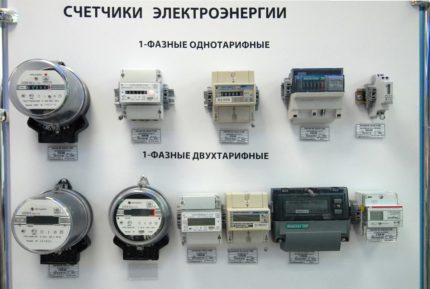
Most new electric meters have liquid crystal displays, on which all numbers are easily distinguishable.
The amount to be paid for the light is calculated in a standard way. First you need to get the difference between the counter for the current and last months, and then multiply this value by the cost of 1 kW.
Types of electricity meters
There are several ways to classify dual tariff counters. According to the type of power network, they are divided into single phase and three phase. Each type of device corresponds to the number of phases of the mains. The choice of a single-phase or three-phase meter depends on which input of electricity is organized in the apartment (house). In 90% of city apartments, single-phase connection. In them, you can put simple single-phase meters, which are much cheaper than three-phase ones.
The cheapest two-tariff single-phase meters are the products of the Moscow factory of electrical measuring instruments (model SOE-55), but there is no point in buying them yourself. Every energy company that serves certain homes and neighborhoods has the right electricity meters. It is best to get them in the housing and communal organization.
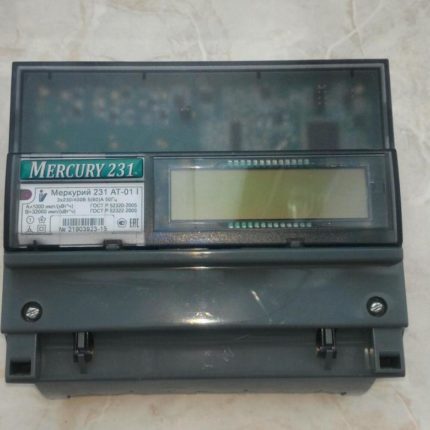
Counters are also divided by accuracy classes: 0.5, 1 and 2. The smaller the class, the more accurate the instrument and the minor error. Devices of accuracy class 0.5 are the most expensive. In addition, electricity meters can be classified by installation method.
By type of installation They are divided into:
- DIN rail mounted devices
- devices with a three-point installation system;
- devices with universal mount.
Mounting on a DIN rail is a way of installing a modern electric meter in special box using a unified mount for the groove and retainer.
Meters with a three-point installation system are suitable for apartments with old designs of switchboards. Some metering devices can be installed both in the traditional way and on a DIN rail. They are considered universal.
Calculation of the benefits of a dual rate meter
Benefit is a loose concept. It should be determined by each for himself, depending on the characteristics of the operation of certain household appliances. For the convenience of calculations, you can use the standard indicators of electricity consumption for home devices.
The most powerful household appliances include:
- refrigerator (consumes approximately 30 kW per month depending on the model);
- washing machine (30-35 kW);
- Personal Computer (36-40 kW, but indicators can be 2 times more if it comes to a powerful PC);
- electric kettle (approximately 25 kW comes out per month, although this device consumes an extremely large amount of energy in 1 hour of operation);
- hair dryer (5-15 kW);
- Dishwasher (20-22 kW per month when using about 3 hours per week);
- microwave (10-13 kW);
- TV (5-12 kW);
- a vacuum cleaner (5-10 kW);
- iron (in the region of 7-8 kW).
Now, based on the consumption of each of the devices, you need to check how much you will have to pay for the light with a single-tariff and two-tariff meter.
All calculations are based on electricity tariffs in Moscow and the Moscow Region. In the Moscow region, for a single tariff meter, the cost of 1 kW is 5.47 rubles.
For two-tariff electricity meters, prices are slightly different. When using the differentiated tariff at night (from 23 to 7 hours), a fee of 2.13 rubles per kilowatt will be charged, and in the daytime - 6.29 rubles per kW. In other regions, the cost of kilowatts may vary, but the proportion itself will remain.
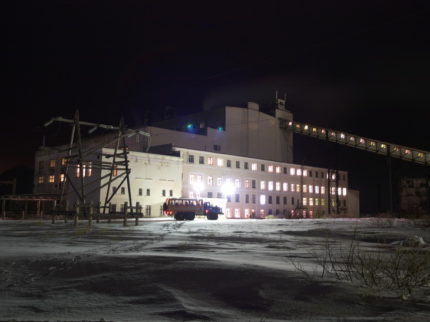
When calculating the financial benefits of a two-tariff electric meter, it is necessary to take into account the time at which these household appliances usually work. This will make it possible to carry out the correct calculations.
The operating time of each household appliance looks something like this:
- The refrigerator is open around the clock.
- The washing machine can also be started after 23:00, but at night it will be possible to wash a maximum of 2 times (and usually once), because the washing cycle is 1-2 hours, depending on the program used.
- A computer is used both day and night, depending on the life schedule and the nature of the work.
- The electric kettle is turned on both in the morning (including until 7:00), and in the evening, when they come home from work (until 23:00), and after 23:00. But mostly the teapot is boiled from 18:00 to midnight.
- The hair dryer is often dried after 7 a.m. when electricity is being calculated at the daily rate.
- A dishwasher with accumulated dirty dishes during the day can be turned on after 23:00.
- Food in the microwave is heated mainly from 7 to 23 hours.
- They watch TV on weekdays in the evening, so it often works during the night tariff.
- Due to the perceptible noise (if you do not take into account some modern models), the vacuum cleaner practically does not turn on early in the morning (before 7:00) or late in the evening (after 23:00).
- You can also iron things during the night tariff (after 23:00).
Now you can make small calculations. For examples, information on the average electricity consumption by household appliances per month is taken.
For a single tariff electric meter, calculations will be simple. First, the total consumption of all devices is calculated based on averaged data. It is equal to 173 kW. Without any devices (for example, a dishwasher, vacuum cleaner or electric kettle), this value can be less. On a single tariff meter for 173 kilowatts at Moscow tariffs you need to pay 993 rubles.
We also recommend that you familiarize yourself with better ways data transfer due.
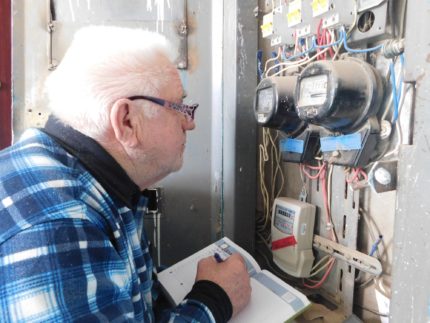
Before calculating the benefits of installing a two-tariff meter, you should analyze the actual energy consumption in the apartment and determine the devices that constantly work.
The calculations are a little more complicated, so it will be more appropriate to calculate the cost of the consumed electricity separately for each device, and then add up the information received:
- Refrigerator It works both night and day, so you need to calculate one half of the time it works on a daily basis, and the second on a nightly rate. An example looks like this: 15 * 2.13 + 15 * 6.29 = 126 (rubles).
- Washing machine can be used in a similar way, but here it is better to take a ratio of 1 to 3, i.e. at a night rate, only a third of the total consumption should be calculated: 10 * 2.13 + 20 * 6.29 = 147.1 (rubles).
- Calculation for a computer: 18 * 2.13 + 18 * 6.29 = 153.69 (RUB).
- For electric kettle approximate calculation: 13 * 6.29 + 12 * 2.13 = 107.33 (rubles).
- Hair dryer rarely include before 7 in the morning and after 11 in the evening, so it is better to take into account only the daily rate for it: 5 * 6.29 = 31.45 (rubles).
- Dishwasher can be turned on at any time, but suppose that it is set by timer after 11 pm: 20 * 2.13 = 42.6 (rubles).
- Calculation for the microwave: 10 * 6.29 = 62.9 (rub.).
- For tv: 3 * 2.13 + 2 * 6.29 = 18.97 (rubles).
- For vacuum cleaner: 5 * 6.29 = 31.45 (rub.).
- For iron: 7 * 6.29 = 44.03 (rub.).
If you add all these values, you get 765.5 rubles. This is almost 230 rubles less than the amount that you have to pay for the consumption of household appliances when using a single tariff meter. But this is subject to loading the dishwasher late in the evening and periodic washing at night.
If there is no dishwasher (and not every family has it), then the difference in readings will be less: 722 rubles for a two-tariff meter versus 880 rubles for a one-tariff meter. Those. overpayment in the second case will be about 160 rubles.
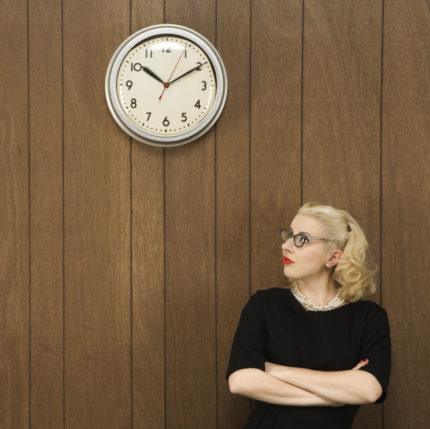
Then you need to calculate how much electricity all the bulbs in the house consume. They are in chandeliers, floor lamps, sconces and other lighting fixtures.
The number of kilowatts depends on the type of lamp:
- LED light bulbs consume 10 watts per hour;
- luminescent - 36 watts per hour;
- incandescent lamps - 96 watts per hour.
Light is turned on in the dark. In winter, it starts to get dark at 16 o’clock, but much depends on the region. On average, each light bulb in a house works for about 4 hours a day (some less, some more). Those. per month, one LED lamp consumes 1.2 kW, fluorescent - 4.3 kW, and normal - 11.5 kW.
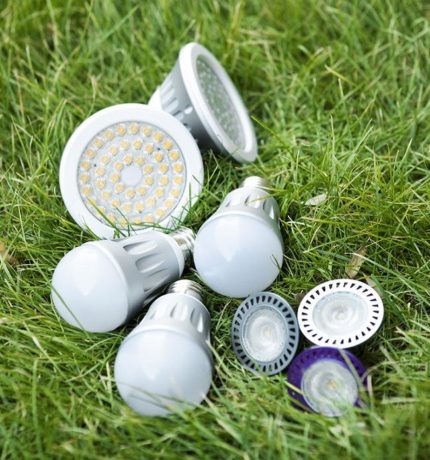
The number of light bulbs in apartments depends on the personal preferences of its owners and the total area of the room. For example, there can be 5 or 25 in the kindergarten. But for calculations, you can take an approximate value of 15 lamps: 3 for the kitchen and both rooms, two for the hallway and bathroom, and one for the pantry and toilet.
If all the bulbs in the apartment are LED, 18 kW will run in a month, if they are fluorescent - 64 kW, and if ordinary - 172.5 kW.
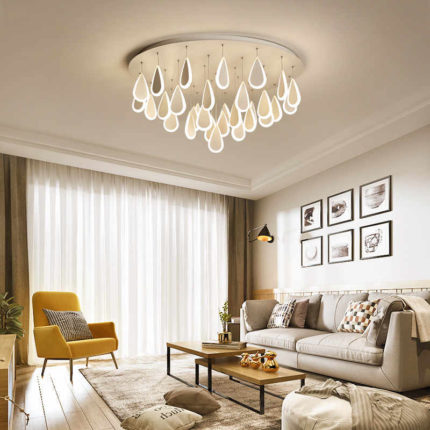
If an ordinary single tariff meter is installed in the apartment, then a month you will have to pay 98.5 rubles for LED bulbs, 350 rubles for fluorescent lamps and 943.5 rubles for ordinary lamps.
If you use a two-tariff meter, the electricity charge will decrease. However, the light often turns on until 23 hours, so the bulbs will work during the operation of the daily tariff. The ratio can be taken 1 to 3.
The cost of a month of electricity consumption is equal to:
- for LED bulbs: 6 * 2.13 + 12 * 6.29 = 88.26 (rubles);
- for luminescent: 22 * 2.13 + 42 * 6.29 = 311.04 (rub.);
- for incandescent lamps: 57.5 * 2.13 + 115 * 6.29 = 845.83 (rubles).
The benefit depends on the type of light bulbs installed.For LEDs, it will be about 10 rubles, but for incandescent lamps - already 100 rubles. But does it make sense to buy a two-tariff flowmeter if you can replace the bulbs in the house with more economical ones?
Who will benefit from a two-tariff counter?
From the calculations indicated above, it is clear that a two-rate meter allows you to save money. But not everyone will benefit from this method.
A two-rate flow meter is needed in the following cases:
- A person actively uses electrical appliances and turns on the light at home after 23 hours. For example, he comes home after work at 10 pm. If the whole family goes to bed before 11 pm, then the two-tariff meter will not be profitable, because the main electricity consumption will be calculated at an increased daily rate.
- The apartment has many electrical appliances (including underfloor heating), and ordinary incandescent bulbs are screwed into the chandeliers. In this case, a lot of electricity is consumed, and the benefits of using a two-tariff electricity meter will be noticeable. If at home there is only a refrigerator, a washing machine and a TV that rarely turns on, then the savings will be negligible.
- In a private house for the operation of heating systems, hot water and lighting requires electricity. Moreover heating boilers consume large amounts of electricity. But the owners of the cottages have the opportunity to control the operation of the boilers using a timer and start them only at a certain time (after 11 o’clock in the evening).
If a person leads a nocturnal lifestyle, then he will be able to feel the benefits of installing a two-tariff meter.
In all other cases, the benefit will be in question, because you will have to pay extra for installing the meter. Installation of the simplest two-tariff electricity meter at Mosenergo tariffs will cost almost 4 tr. In other regions, prices may vary.
How to accelerate the payback of such a device?
The payback of a two-rate counter is a separate issue. For installation or flashing the device you need to pay a tidy sum. These devices are not installed for free and cost more than standard single-rate flow meters.
We talked about the cost of installing and replacing electricity meters in this stuff.
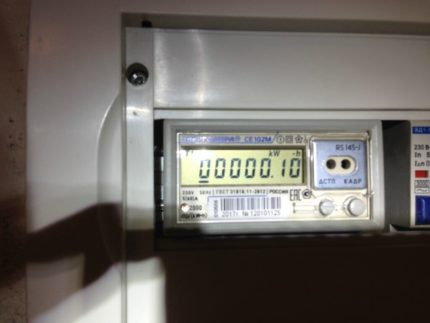
Externally, a two-tariff electric meter is no different from a standard metering device. The difference between them is only in the readings, which display information for the night and day in different ways.
Due to the fact that the dimensions of the counters are the same, the new device can be installed in place of the old one.
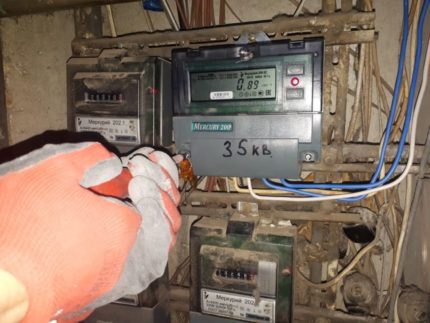
Before installation, you need to evaluate the feasibility of using the device and, perhaps, stop on a single-tariff device.
If the electric meter is already installed, you can think about the optimal electricity consumption:
- turn on the washing machine and dishwasher only after 23:00;
- set the timer on the multicooker so that it starts cooking even before the awakening of households, i.e. until 7 in the morning;
- start the water heating mode in the boiler (if any) only at night, and in the afternoon activate the temperature maintenance function in it (to maintain the water temperature much less electricity is required than when it is heated).
In this case, it will be possible to achieve savings of about 200 rubles per month. Those. installation of the electric meter will be broken in 2 years.
If you do not try to use electrical appliances after 23:00, then there will be no tangible benefits, because even the meter itself will beat off for about 5 years (if not more).
Conclusions and useful video on the topic
A look at the profitability of a two-tariff electric meter is reflected in the following video:
A two-tariff meter is not suitable for everyone. Before installing it, you need to carefully calculate all your expenses on electricity in order to understand whether it is needed or not.
There is no universal answer to the question of the appropriateness of installing a two-tariff meter. Without accurate calculations of energy consumption in a particular apartment or private house, it is difficult to say in advance whether it will be profitable or not.
Do you use a double tariff electricity meter? Share your experience with other users - tell us whether it was beneficial for you to use it. If you are just looking at this type of counters and want to clarify a number of nuances, ask your questions in the comments section below this publication.

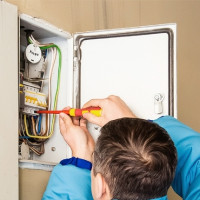 How much does it cost to change an electric meter: the cost of replacing an electricity meter in an apartment and a private house
How much does it cost to change an electric meter: the cost of replacing an electricity meter in an apartment and a private house 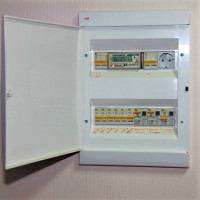 Box for an electricity meter in an apartment: the nuances of the selection and installation of a box for an electric meter and automatic machines
Box for an electricity meter in an apartment: the nuances of the selection and installation of a box for an electric meter and automatic machines 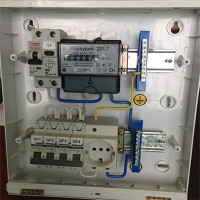 Connection of a single-phase electric meter and automatic machines: standard schemes and connection rules
Connection of a single-phase electric meter and automatic machines: standard schemes and connection rules 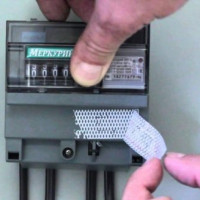 Antimagnetic seal on the electric meter: principle of operation and specifics of use
Antimagnetic seal on the electric meter: principle of operation and specifics of use 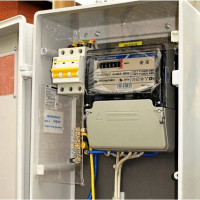 Replacing an electric meter in an apartment and in a private house: the specifics of replacing a meter
Replacing an electric meter in an apartment and in a private house: the specifics of replacing a meter 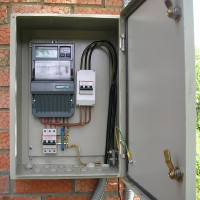 Street box for the electric meter: requirements and features of the choice and installation of the electrical panel
Street box for the electric meter: requirements and features of the choice and installation of the electrical panel  How much does it cost to connect gas to a private house: the price of organizing gas supply
How much does it cost to connect gas to a private house: the price of organizing gas supply  The best washing machines with dryer: model rating and customer tips
The best washing machines with dryer: model rating and customer tips  What is the color temperature of light and the nuances of choosing the temperature of the lamps to suit your needs
What is the color temperature of light and the nuances of choosing the temperature of the lamps to suit your needs  Replacement of a geyser in an apartment: replacement paperwork + basic norms and requirements
Replacement of a geyser in an apartment: replacement paperwork + basic norms and requirements